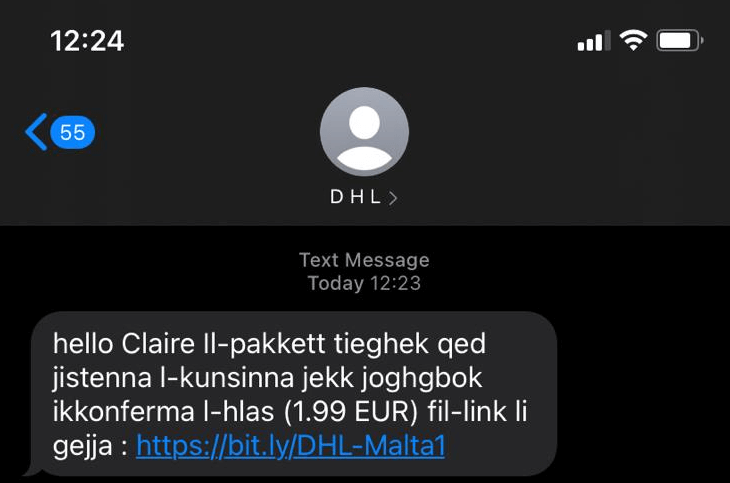Contents:
The Police stations have been receiving a large number of reports on a daily basis from victims that have been scammed in a newly discovered parcel delivery scam.
The victims were scammed through convincing emails and personalized text messages.

The initial parcel delivery scam started in April but it has intensified in the recent weeks with messages being sent in Maltese and English that are created to look like are coming from numerous delivery groups like MaltaPost and DHL.
The scammers are making between €800 and €1,800 per victim, but the highest amount defrauded from one single person was €5,000.
How Does This Scam Work?
The texts that the victims are receiving come from an unknown number and are urging the victim to access a link in order to confirm payment.
(DHL) Your package is waiting for delivery please confirm the payment (1USD)
It’s interesting to note that this new scam has an added layer as it contains the name of the intended victim, in an attempt to make the messages more convincing.
Not the Only Scam Operating
Some warnings have also been issued in regards to another scam in which the caller claims to be a member of the police, as several people have reported receiving calls with a recorded message in English telling them about suspicious activity related to their e-ID account, or that an arrest warrant in their name had been issued.
Back in May, several people had fallen victims to a scam in which they received a text message that looked like it was coming from MaltaPost that was asking them to click a link in order to arrange for parcel delivery and asking for the payment of a fee, and MaltaPost issued two warnings about the scam in an attempt to keep their customers safe.
How Can You Tell if a Certain Message Is a Scam?
- Pay close attention to the sender’s number as scams are unlikely to come from an official number owned by a recognized company.
- Do not click on any links that are not the official URL of the delivery company or use shortened links like bit.ly or tiny.url.
- Pay attention to the way in which the message is written as any misspelled words can be an indicator of scam activities.
- Keep a record of any items that you are expecting in the mail and check accordingly.


 Network Security
Network Security
 Vulnerability Management
Vulnerability Management
 Privileged Access Management
Privileged Access Management
 Endpoint Security
Endpoint Security
 Threat Hunting
Threat Hunting
 Unified Endpoint Management
Unified Endpoint Management
 Email & Collaboration Security
Email & Collaboration Security










